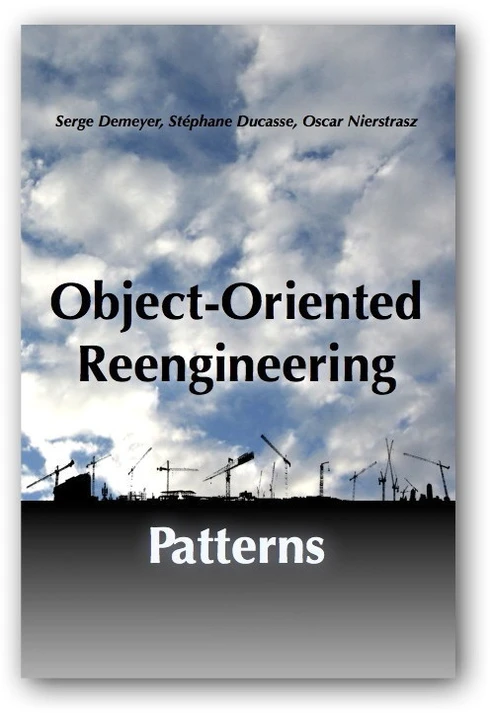
Object-Oriented Reengineering Patterns
No ratings
Serge Demeyer
Stéphane Ducasse
Oscar Nierstrasz
Copyright Year:
Publisher: Stéphane Ducasse
Language: English
Formats Available
Conditions of Use
![]() Attribution-ShareAlike
Attribution-ShareAlike
CC BY-SA
Table of Contents
I Introduction
- Chapter 1: Reengineering Patterns
II Reverse Engineering
- Chapter 2: Setting Direction
- Chapter 3: First Contact
- Chapter 4: Initial Understanding
- Chapter 5: Detailed Model Capture
III Reengineering
- Chapter 6: Tests: Your Life Insurance!
- Chapter 7: Migration Strategies
- Chapter 8: Detecting Duplicated Code
- Chapter 9: Redistribute Responsibilities
- Chapter 10: Transform Conditionals to Polymorphism
About the Book
The documentation is missing or obsolete, and the original developers have departed. Your team has limited understanding of the system, and unit tests are missing for many, if not all, of the components. When you fix a bug in one place, another bug pops up somewhere else in the system. Long rebuild times make any change difficult. All of these are signs of software that is close to the breaking point.
Many systems can be upgraded or simply thrown away if they no longer serve their purpose. Legacy software, however, is crucial for operations and needs to be continually available and upgraded. How can you reduce the complexity of a legacy system sufficiently so that it can continue to be used and adapted at acceptable cost?
Based on the authors' industrial experiences, this book is a guide on how to reverse engineer legacy systems to understand their problems, and then reengineer those systems to meet new demands. Patterns are used to clarify and explain the process of understanding large code bases, hence transforming them to meet new requirements. The key insight is that the right design and organization of your system is not something that can be evident from the initial requirements alone, but rather as a consequence of understanding how these requirements evolve.
About the Contributors
Authors
Serge Demeyer is a professor in the Department of Mathematics and Computer Science at the University of Antwerp in Belgium.
Stéphane Ducasse is a research director at INRIA Lille in France.
Oscar Nierstrasz is a professor of computer science at the University of Bern and leader of the Software Composition Group.
